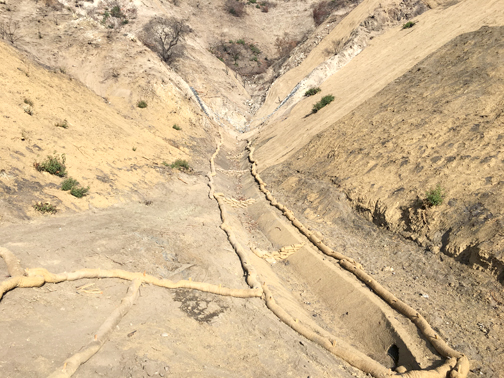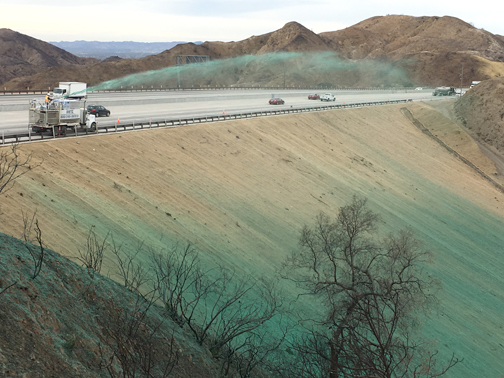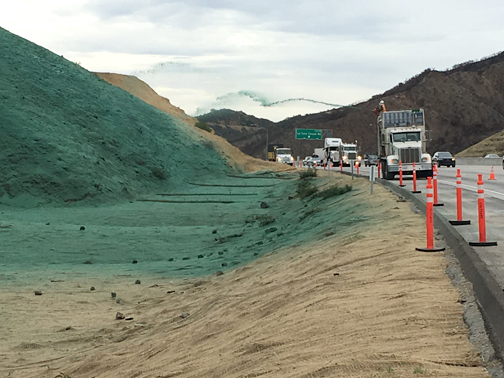
By Mary O’KEEFE
When the rains poured down this week around the Southland focus was on the hillsides affected by recent wildfires. Mudslides, like the ones that came after the Station Fire, follow many fires, and are the one-two punch from Mother Nature that everyone dreads – and fears. In addition to flooding from water and mud in neighborhoods was the flooding of roads and highways.
Driving eastbound on the Ventura (134) Freeway was slow going on Tuesday afternoon, not because of traffic collisions, although there were many of those, but due to Caltrans trucks that lined the freeway with pumps, siphoning water that was flooding traffic lanes.
Powerful rainstorms were something that was uppermost in the minds of Caltrans workers and administrators after the fires were contained and the devastation evaluated. One of the procedures Caltrans does to help control erosion of the hillsides is to spray a mixture of mulch and seeds. That is the green covering that drivers can see on both sides of the Foothill (210) Freeway in the areas of the La Tuna Fire.
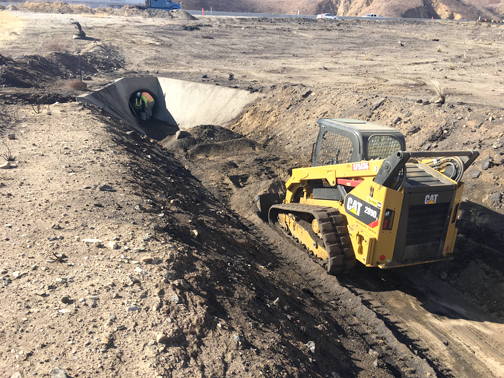
“We coordinate with the Los Angeles City Fire Department, LA County and a contractor to do that [type of spraying],” said Tim Weisberg, spokesman for Caltrans District 7.
Weisberg added that Caltrans, along with the other agencies, keeps in mind the potential threat of slides that can come with heavy rains after fires.
“We look at the damage and do what we can for slope erosion,” he added. “We have a contractor who is ready to make any repairs to slopes and is patrolling the La Tuna Fire area 24 hours a day. We also have a Director’s Order to do emergency repairs in the Creek Fire burn area further down I-210 near Sylmar/Lake View Terrace. The work will start in a few months. The work will be similar, and include clearing debris, regrading (building in flat rows on hillsides to help with run-off), hydroseeding and cleaning gutters and inlets.”
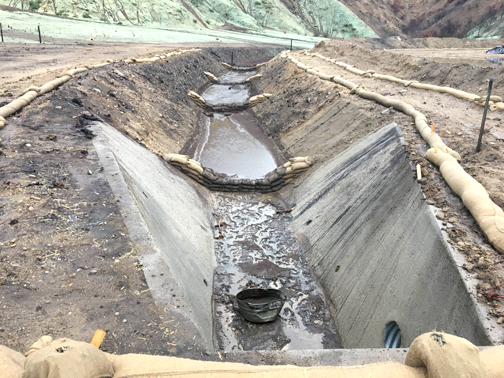
Having a Director’s Order is advantageous because it allows Caltrans to expedite the contract bidding process, which allows work to begin sooner.
The seedls are from native plants and take some time to grow. Caltrans also uses bulldozers to protect the land from erosion; that is the stair-step design seen along the 210. In some areas, plastic shading is also used to help areas that are completely burned.
Despite all the protections and precautions, burned hillsides can still slide. On Tuesday, a mudslide stopped traffic on the 101 Freeway in the Montecito and Ventura areas. Mud and flooding continued on the 101 as well as on several other freeways from Orange to Santa Barbara counties.
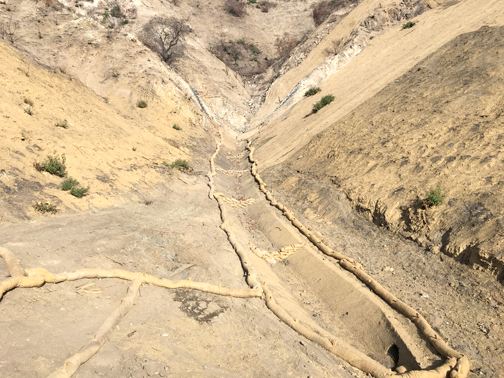
Those who are driving the roads are also encouraged to alert California Highway Patrol if they see something they deem dangerous. If drivers see debris in the road and think it is an immediate hazard, they can contact CHP by calling 911.
“We do have maintenance teams on standby that assist with CHP or fire departments,” Weisberg added.
This week’s rainstorms caused a lot of mud and rapid water to run down streets that may not normally flood. Weisberg said drivers need to use common sense when approaching areas of potential flooding. He added drivers should avoid burn areas if possible and, if people must be on the roads, to allow extra time and to be alert. Street conditions can change quickly, even for those who are prepared. On Tuesday an LA Police Dept. patrol unit got stuck in the mud along La Tuna Canyon Road and along Country Club Drive in Burbank vehicles parked along the side of the road floated down the street before getting stuck in the mud.
Caltrans has an app for smartphones titled QuickMap that gives up-to-date information on road conditions.
During the rains, Weisberg said, Caltrans halted construction. After the rains, Caltrans will continue its erosion care via hydroseeding and construction along the fire scarred hillsides.

